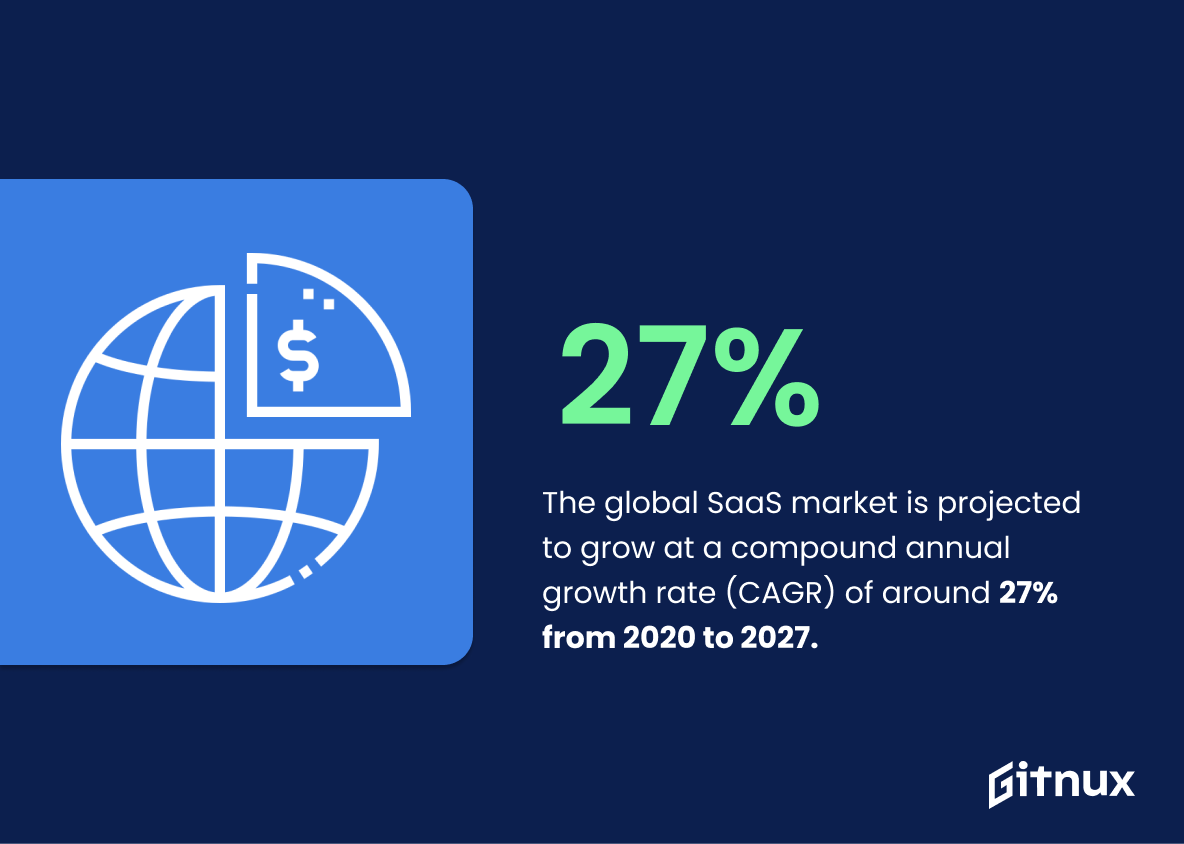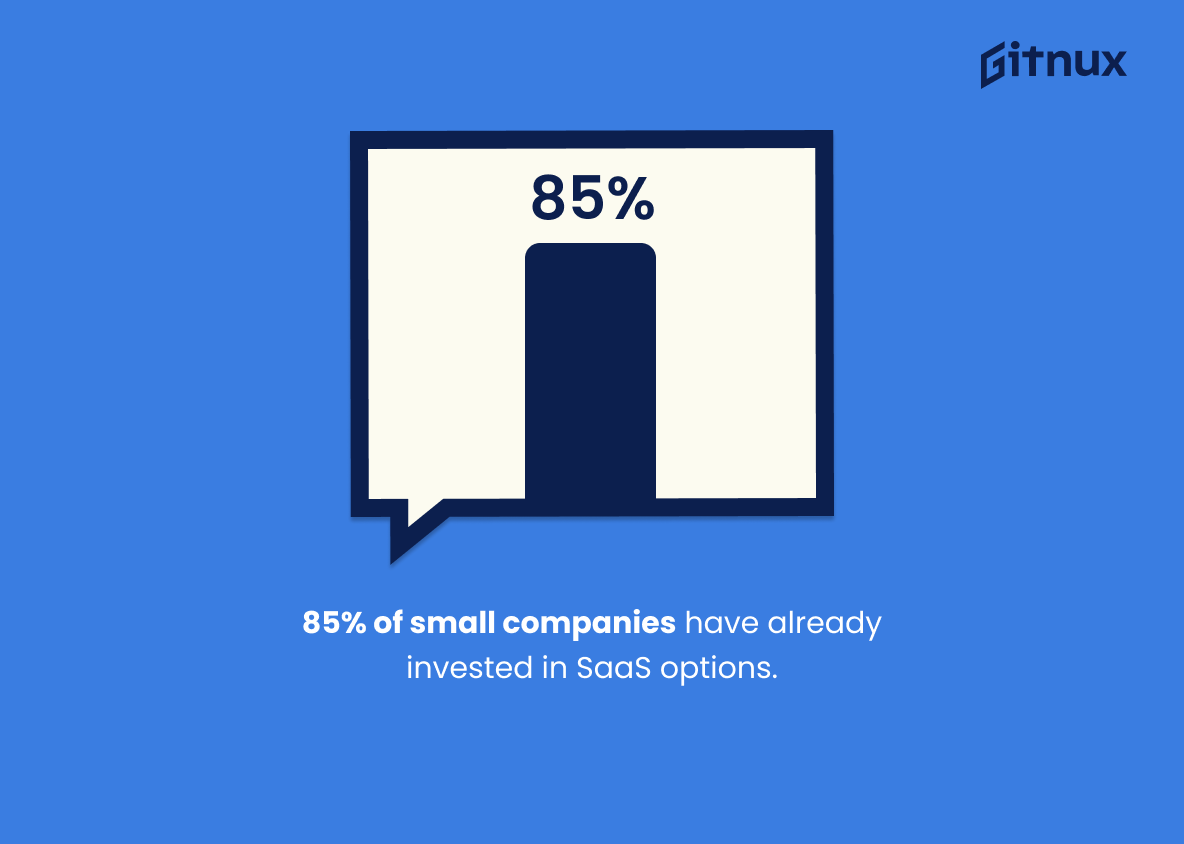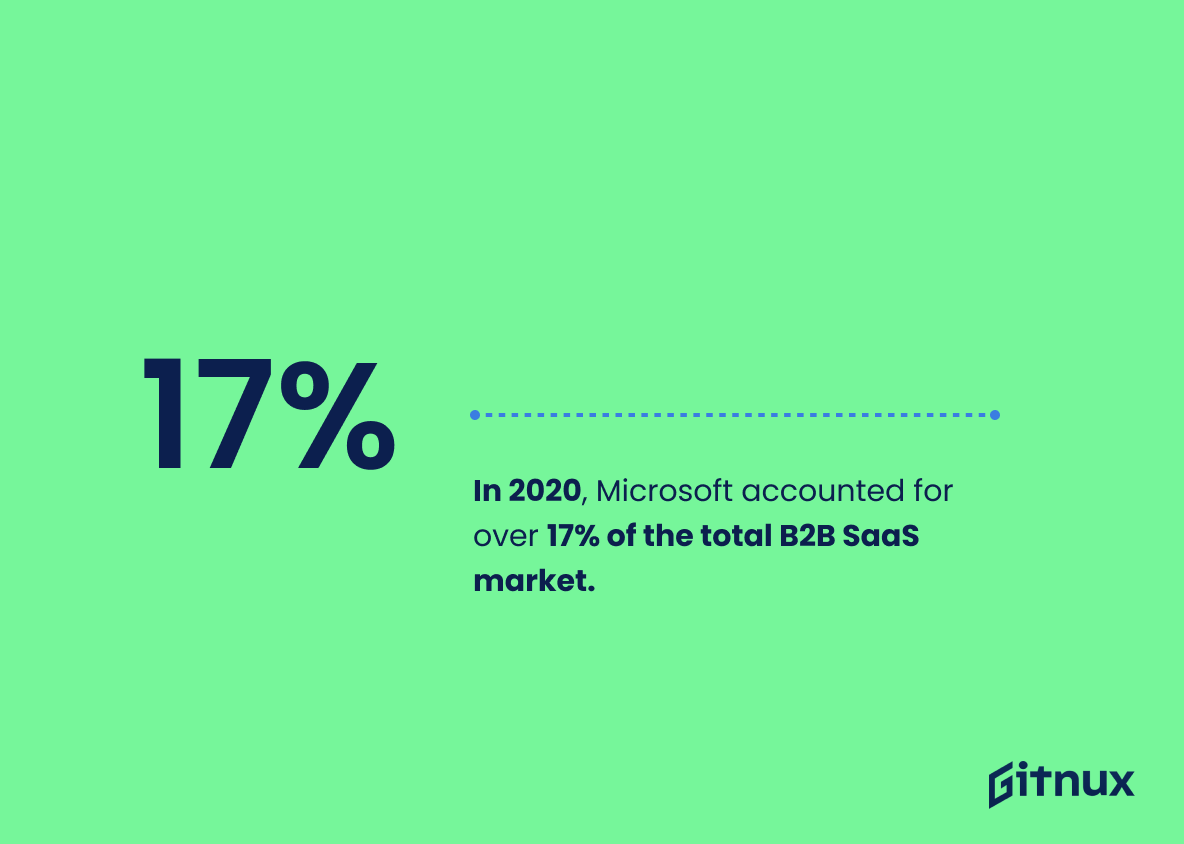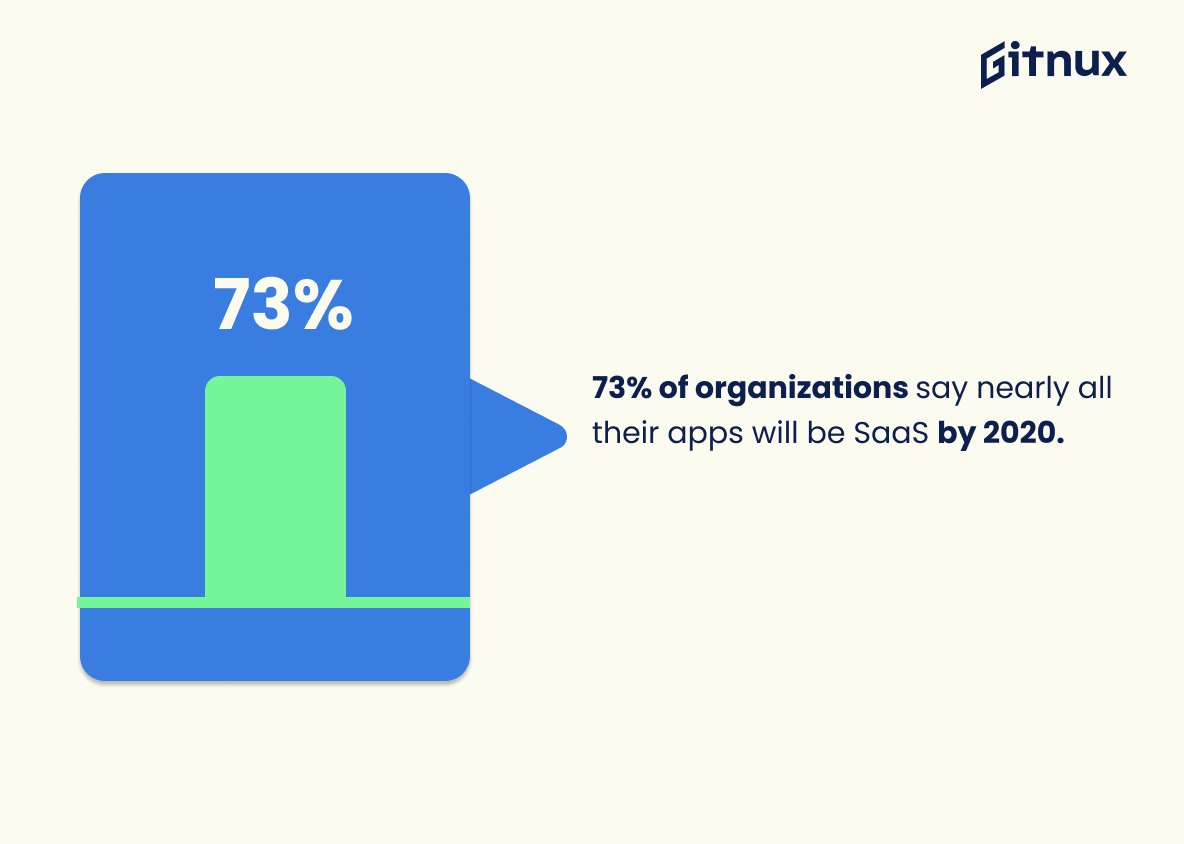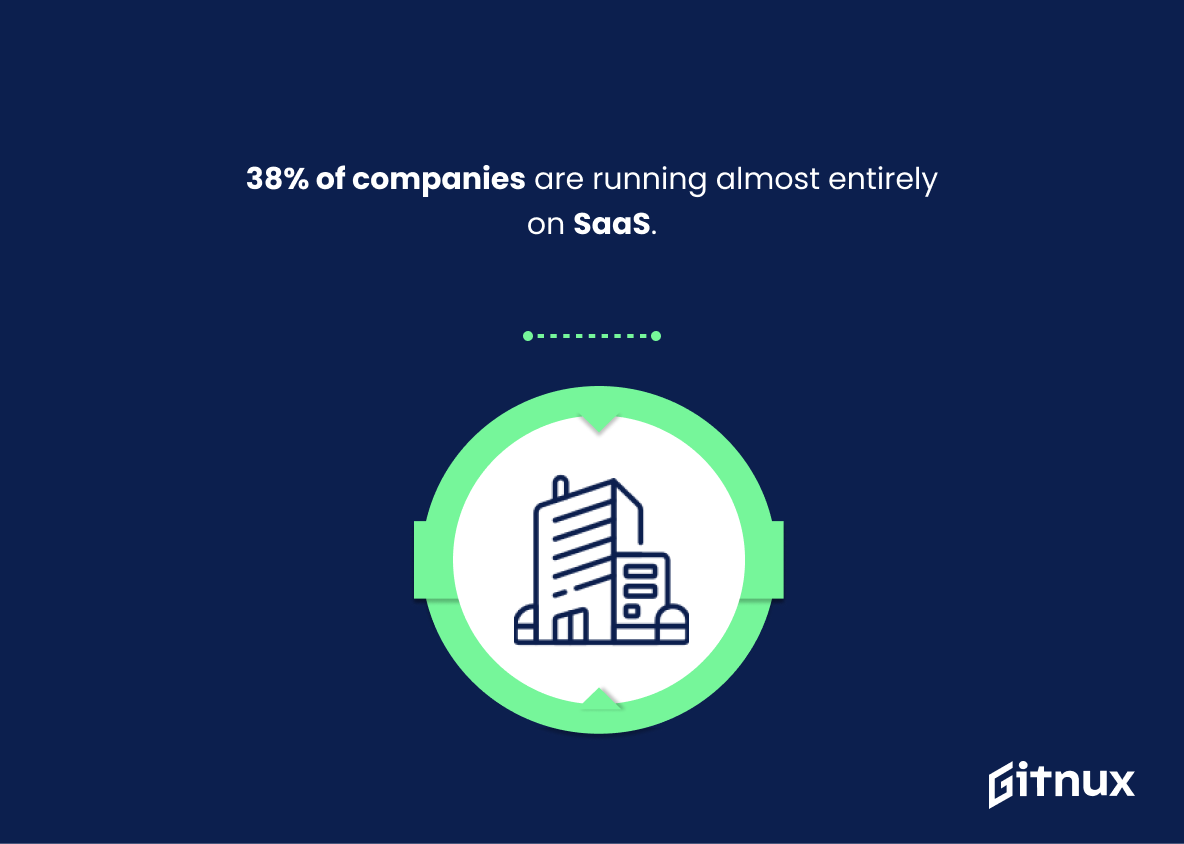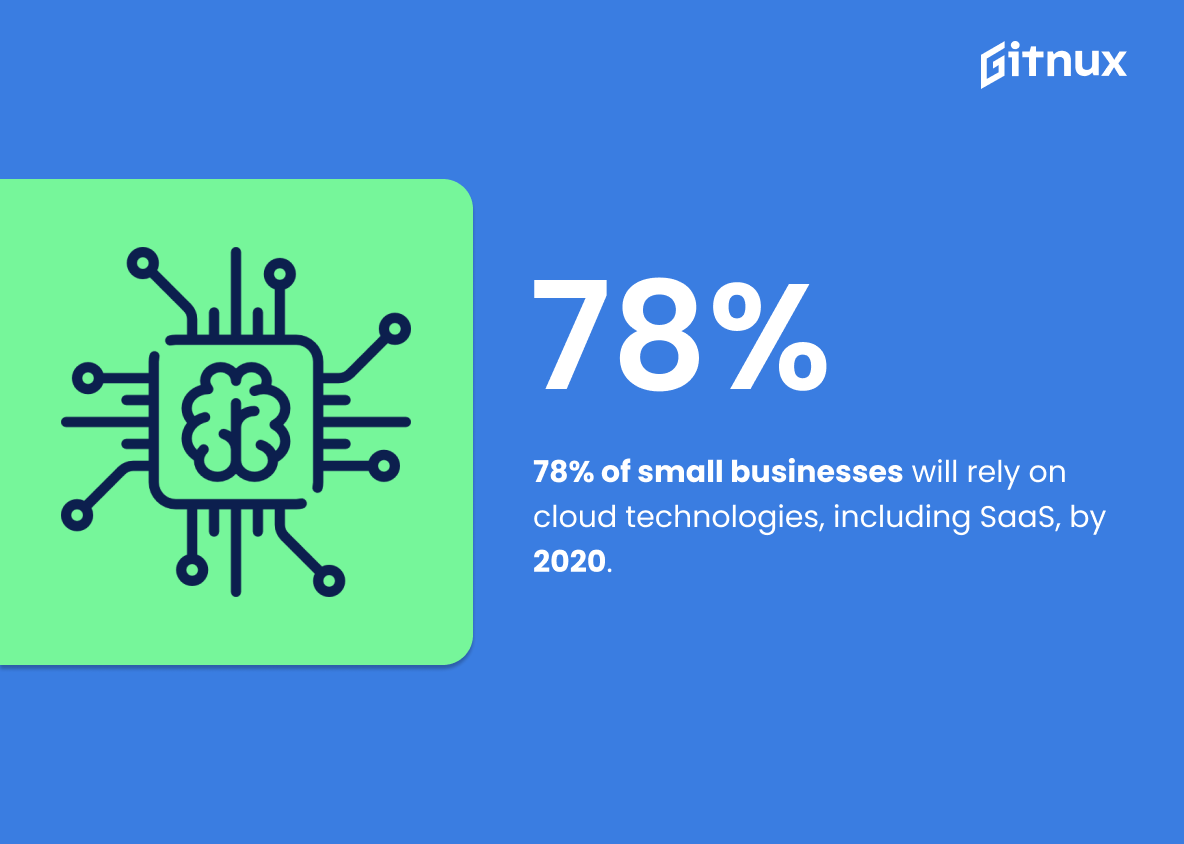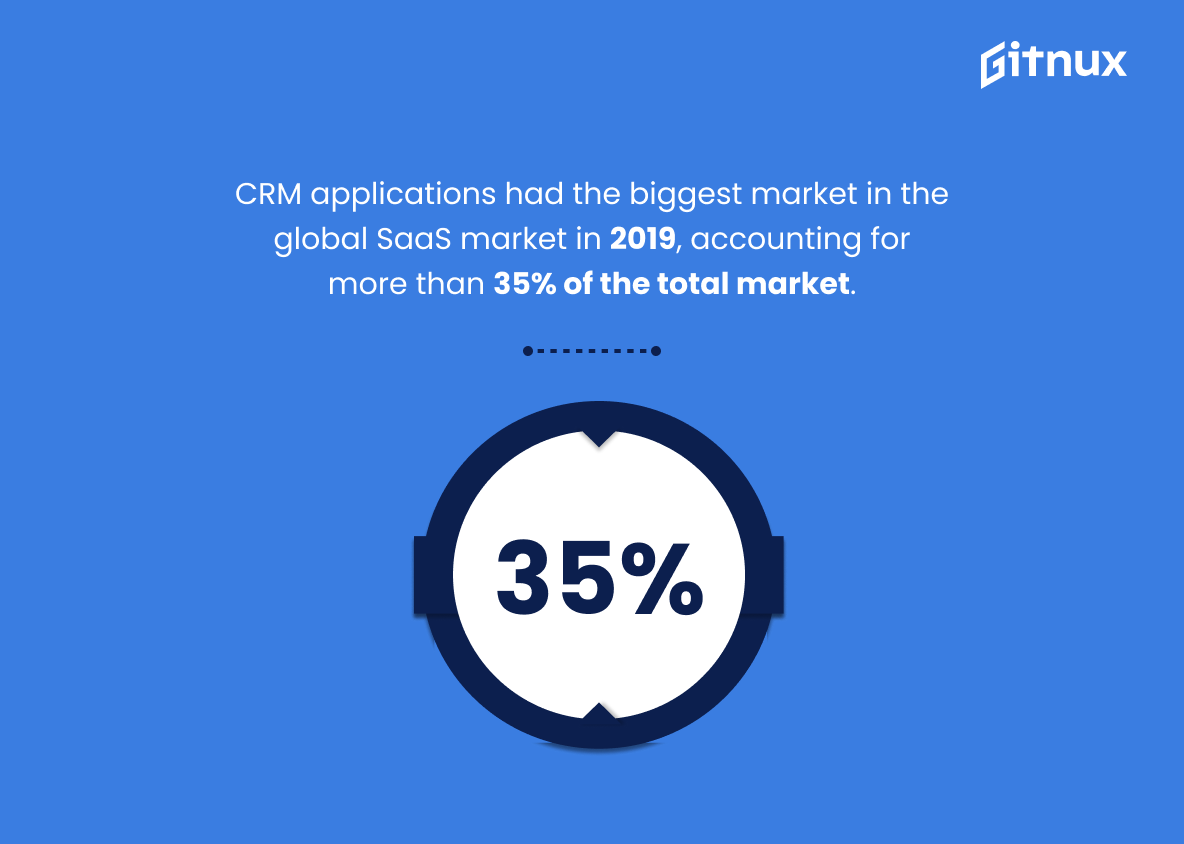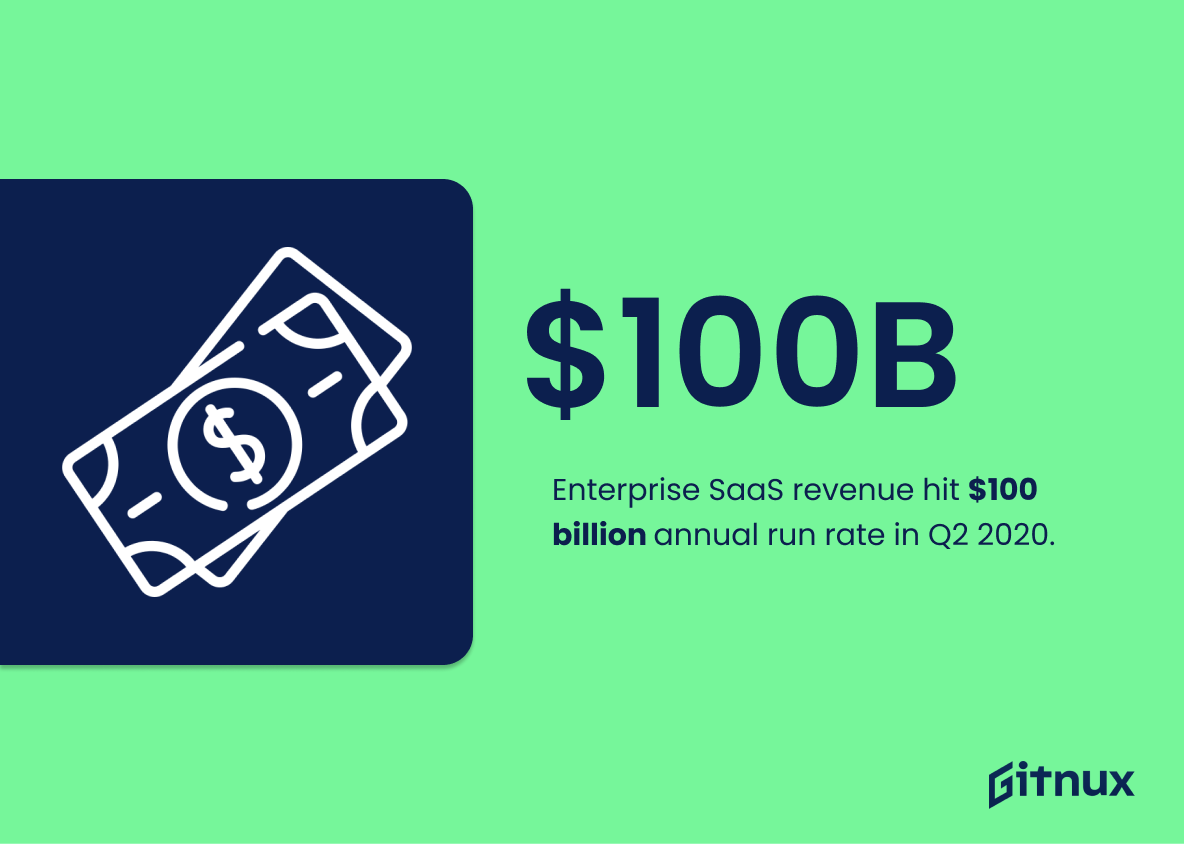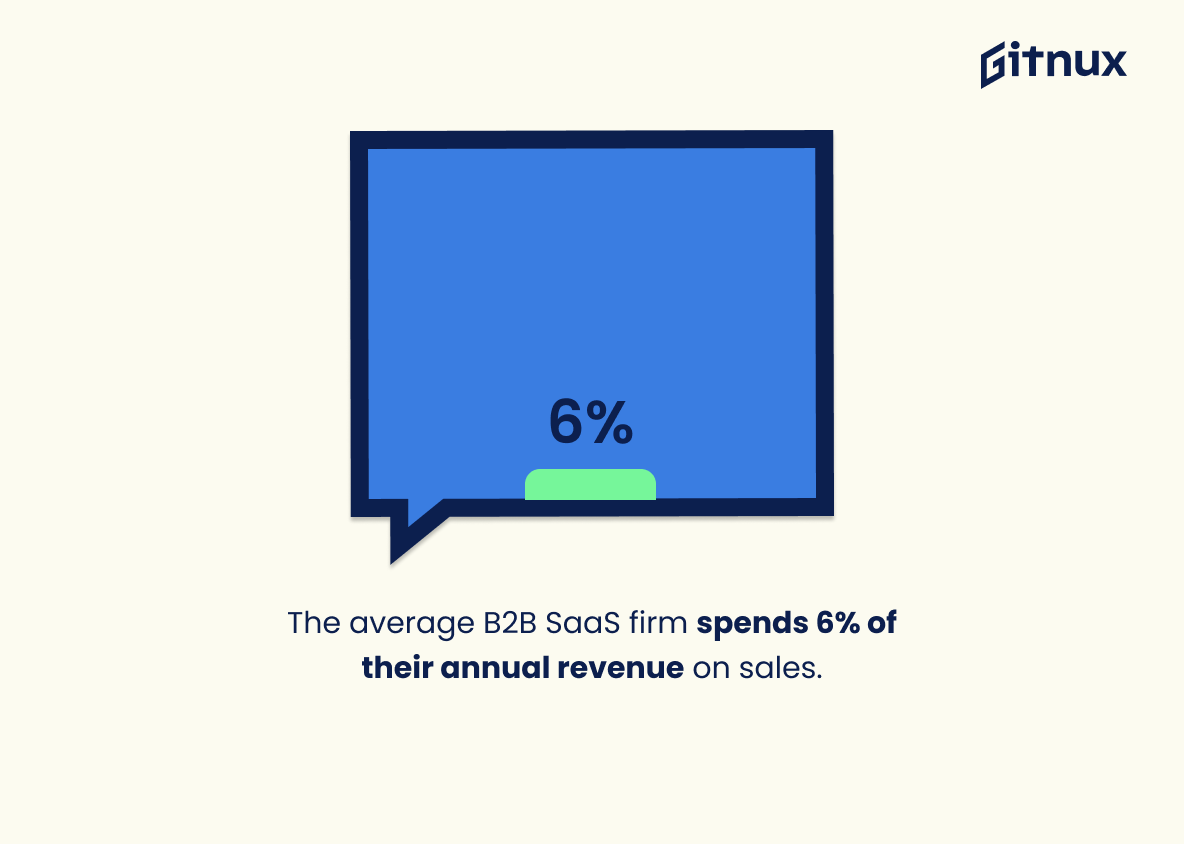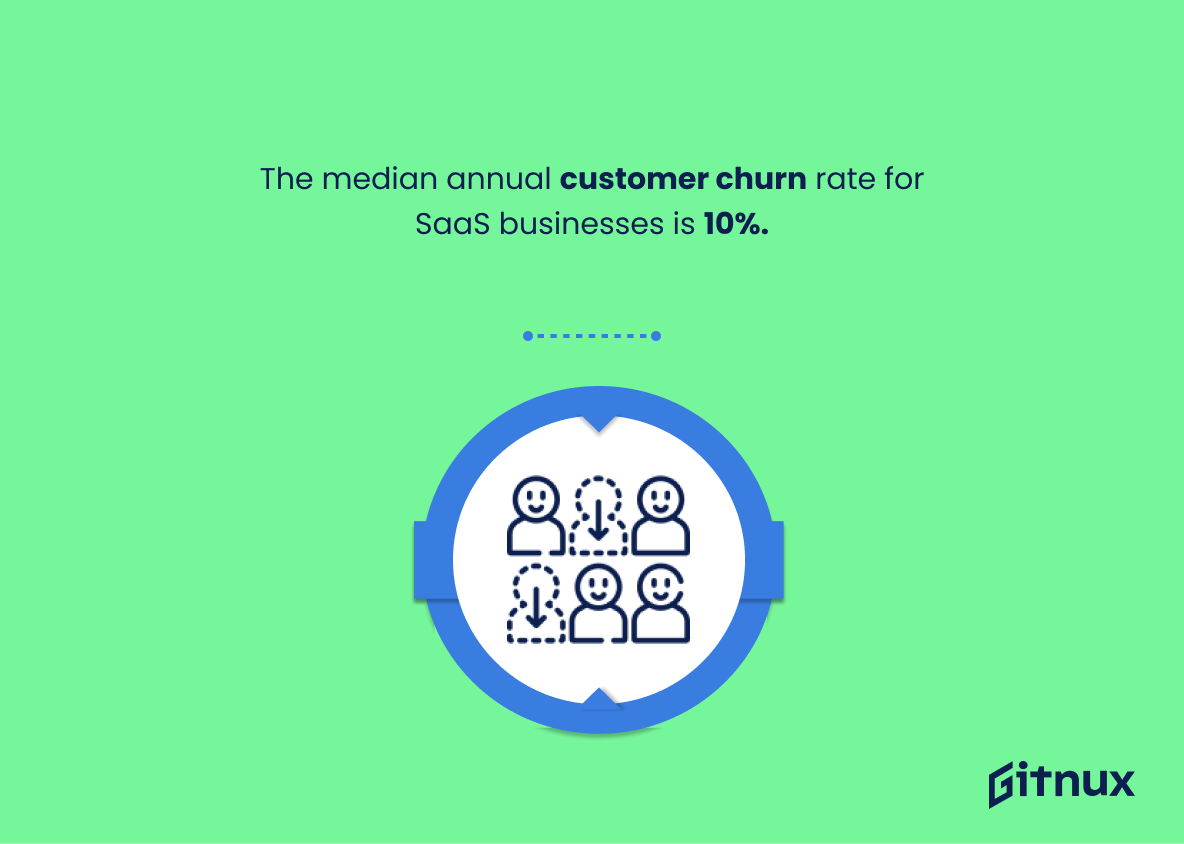Navigating the ever-evolving world of the B2B SaaS industry can, at times, feel like deciphering a complex code. With rapid advancements in technology, an understanding of key trends and statistics becomes imperative for any prudent business. This blog post is your decoder ring for these intricate details. We delve deep into the realm of B2B SaaS industry, equipping you with the latest statistics and insights.
With a comprehensive overview of the current state of the market, growth forecasts, and emerging trends, this data-driven journey gears you up to ride the wave strategically and lucratively. Whether you’re a startup, an established SaaS provider, or simply wanting to understand the landscape better, this blog post should become your go-to resource.
The Latest B2B SaaS Industry Statistics Unveiled
The global SaaS market is projected to grow at a compound annual growth rate (CAGR) of around 27% from 2020 to 2027.
Delving into the anticipated growth of the global SaaS market, with a CAGR of about 27% from 2020 to 2027, brings some fascinating insights into the B2B SaaS industry dynamics. Such promising forecast is a clear indicator of how crucial B2B SaaS is becoming in today’s digital era. This figure not only underscores the profitability potential for businesses in the sector, but it also signifies the escalating demand for SaaS solutions globally.
It is a crucial marker shining a spotlight on the substantial shift towards digitalization, service accessibility, and the increasing trust businesses place on SaaS platforms for operational efficiency. Hence, any B2B SaaS actor, be it a beginner startup or a seasoned player, should keep a keen eye on this surging wave and strategize accordingly to optimize gains from this expanding market.
Approximately 85% of small companies have already invested in SaaS options.
Painting a vivid picture of the B2B SaaS landscape, the stunning figure showcasing that around 85% of small enterprises have already embraced SaaS solutions places a significant milestone on the digitization roadmap. The statistic serves as a catalyst to inform and inspire other businesses in a similar category, suggesting that a significant majority of their counterparts are leveraging online services and tools.
It radiates an under-the-hood perspective for potential or burgeoning businesses planning to dive into the realm of investing in SaaS platforms. Furthermore, it amplifies the critical importance of this technology sector and presents an image of a deep-seated drive towards its adoption, indicating that such models not only have emerged as business essentials but are also shaping the core of modern businesses.
In 2020, Microsoft accounted for over 17% of the total B2B SaaS market.
Highlighting the fact that Microsoft held over 17% of the total B2B SaaS market in 2020 sets a fundamental backdrop to understand the landscape of this competitive sector. This figure not only underscores the dominance and influence of the tech behemoth in this rapidly-evolving marketplace, but it also offers a point of comparison for other players, whether they are established names or emerging challengers.
It casts a spotlight on the battle for market share, stressing the challenging environment, yet the lucrative potential, prevalent in the B2B SaaS Industry. Consequently, it delivers an insightful starting point for further explorations and discussions centred on market shift, competition, and business strategies in the realm of B2B SaaS.
An estimated 73% of organizations say nearly all their apps will be SaaS by 2020.
Delving into an increasingly SaaS-centered future, the aforementioned statistic signifies a bold stride towards an era of unprecedented reliance on software-as-a-service platforms. Around 73% of organizations affirm that by 2020, almost all their applications would pivot towards SaaS. Unfolding within the fabric of a B2B SaaS Industry Statistics blog post, it emits a powerful signal of the brewing storm in this dynamic industry’s horizon.
Not only does this percentage underline B2B companies’ adaptive agility, but it also spotlights the transformative potential that SaaS offerings might hold in shaping their future strategies and operations. In the grand chessboard of business, this revelation can veer sharp attention towards investment opportunities, product development, and competitive tactics amongst B2B companies in the SaaS sphere. So, in essence, this statistic presents itself as a lighthouse, guiding actionable insights for ambitious SaaS players and investors alike.
38% of companies are running almost entirely on SaaS.
With the intriguing figure that 38% of companies are near-totally operating on SaaS, the momentum of the transition to cloud-based solutions in the B2B arena becomes evident. This pivotal slice of the corporate pie illustrates a paradigm shift, underlining the persuasive power of the SaaS model over traditional software solutions.
Diving into the realm of B2B SaaS industry statistics, it offers a poignant demonstration of the growing trust and reliance of businesses on SaaS, signifying a blooming opportunity for SaaS vendors. Furthermore, it accentuates the cloud solution’s role as no longer an auxiliary tool but a driving force in today’s business operations. It cements the inevitability of SaaS adoption in the business landscape, essentially shaping the future of B2B relations, processes, and strategies.
78% of small businesses will rely on cloud technologies, including SaaS, by 2020.
Painting the picture vividly, envision 78 out of every 100 small businesses, a considerable majority, making cloud technologies an integral part of their operations by 2020. Reflecting on this data point underscores the pivotal role that Software-as-a-Service (SaaS) is expected to play in the modern entrepreneurial landscape. In the grand maze of B2B SaaS Industry Statistics, this fact offers a compelling viewpoint.
It not only showcases the burgeoning reliance on innovative technological solutions by small businesses, but also hints at the potential growth and opportunities present in the SaaS space. With such a prevalent trend, it naturally paves way for intense competition, pushing for constant innovation, thus shaping the future of the SaaS market.
It is estimated that by 2021, almost 73% of all businesses will be entirely based on SaaS.
In the contemporary milieu of B2B SaaS Industry Statistics, the projection that almost 73% of all businesses will be entirely based on SaaS by 2021 serves as the backbone of our understanding. This piece of statistical evidence is like the North Star, guiding us into an era of increasing SaaS adoption. It paints a vivid picture of the evolving business landscape, allowing us to grasp the extent of the shift towards cloud-based solutions as the foundation of modern business structures.
As a seismic shift in enterprise software procurement and management, the 73% milestone underscores not only the significant role of SaaS models in today’s business world, but also the heavier reliance to be placed on it in the imminent future. It’s a pulsating heartbeat of a presumably thriving B2B SaaS ecosystem, one that brings clarity, provides insights into transformative business practices, and paves the way for innovative forays into the burgeoning SaaS realm. This gives us a prophetic vision of how deeply embedded and fundamentally influential SaaS would become in the corporate world.
SaaS applications contribute to about 50% of workloads in public clouds.
Unveiling a vivid palette of the B2B SaaS industry, this statistic subtly hints at the profound penetration of SaaS applications in the realm of public clouds. By claiming a staggering 50% share, it paints an image of a sky teeming with digital innovations. It serves as a testament, echoing the proliferation and real-world utilisation of SaaS applications in a growingly data-driven era, thereby adding a high dose of credibility and relevance to any blog post discussing B2B SaaS industry trends.
It threads a narrative of the unequivocal importance and dominance of SaaS models in public cloud development, an insight pivotal for anyone dipping their toes in the vast ocean of B2B SaaS industry statistics.
The churn rate for SaaS companies was 16.2% in 2020.
Unraveling the essence of the quoted churn rate for SaaS companies, which was pegged at 16.2% in 2020, is akin to peeking beneath the surface of the iceberg of B2B SaaS Industry Statistics. Bereft of context, it may merely be an unfathomable number. However, in our exploration of this realm, it serves as a crucially enlightening beacon.
Firstly, to comprehend the health and vitality of the SaaS industry, this churn rate is a critical vital sign. Acting as a barometer for customer retention, the mentioned statistic reveals the percentage of customers who discontinue their subscriptions within a given timeframe. A significant churn rate such as 16.2% throws light on the realities that SaaS companies are grappling with in maintaining long-term business relationships.
Furthermore, delving deeper into this realm, the churn rate inflates the magnifying glass on the industry’s inherent challenges. This insightful figure not only highlights a substantial sector of disenchanted clientele but also precipitates questions concerning possible causes of such client attrition. Concerns about product relevance, user experience, customer service, or pricing strategies could be triggering this exodus.
In the grand chessboard of B2B SaaS industry statistics, this churn rate is a critical piece that prompts strategic shift. Unveiling potential weakness in customer retention, it precipitates introspection, recalibration of strategies and fortifies companies’ determination towards developing robust, customer-centric solutions.
In essence, the relevance of the 16.2% churn rate positions itself not as a mere numeral in our blog post, but as a lighthouse casting illuminating insights on the stormy seas that the B2B SaaS industry may be navigating.
CRM applications had the biggest market in the global SaaS market in 2019, accounting for more than 35% of the total market.
Examining this data point breathes life into the understanding of the vast B2B SaaS industry. It is akin to unearthing a hidden treasure that reveals the dominance of CRM applications, which, in 2019, commandeered more than 35% of the global SaaS market. In the grand scheme of SaaS businesses, this high-performing segment’s preeminence signifies key insights into market trends, growth potential, and what specific SaaS solutions businesses are investing in.
Furthermore, it fuels strategic decision-making for stakeholders, providing a compass to steer their investments, innovations, or customer acquisition strategies in the highly competitive SaaS landscape. So, seeing CRM applications pierce the heart of the global SaaS market with such vigor, paints an enlightening picture, crucial for forethought and strategic planning in the B2B SaaS terrain.
Enterprise SaaS revenue hit $100 billion annual run rate in Q2 2020.
Unveiling this towering sum of $100 billion annual run rate for Enterprise SaaS revenue in Q2 2020 serves as a radiant beacon illuminating the sheer magnitude and potential of the B2B SaaS industry. Its impact is twofold; initially, it underscores the exponential growth trajectory this industry is experiencing, making it an attractive prospect for investors and businesses. Secondly, the mammoth figure underlines the rapidly evolving digital transformation adopted by enterprises worldwide.
With businesses switch over to SaaS platforms for flexibility, scalability and cost-effectiveness, the market’s vibrancy is manifested in the revenue data. As the industry matures and technology advances, this revenue benchmark sets a high bar for future growth, making the B2B SaaS sector an enticing field for innovation and investment.
The average B2B SaaS firm spends 6% of their annual revenue on sales.
Diving into the heart of B2B SaaS industry statistics reveals a captivating pattern that sketches the roadmap for a sustainable business model. At the core of this model, the expenditure of an average B2B SaaS firm on sales comes in at around 6% of their annual revenue. This statistic does more than just paint a picture; it effectively delivers a benchmark to measure against.
Riding the wave of this data, firms can evaluate their own sales expenditure strategy. If a company finds itself far above this figure, it may be time to reassess its sales process, question its efficiency, or consider a potential overallocation of resources. Honing in on efficiency can improve return on investment, which is paramount in a market defined by growth and competition.
On the other hand, a company falling significantly below the 6% benchmark might be neglecting crucial investments into sales. This could negatively impact customer acquisition, sales conversion rates, and ultimately limit revenue generation.
Hence, the given statistic serves as a guiding beacon, helping emerging as well as established B2B SaaS companies to calibrate their sales expenditure and thereby build, sustain, and grow in the volatile SaaS landscape.
In 2021, 96% of organizations used at least one private or public cloud service.
Let the clouds open and rain down insights. Drift into the world of B2B SaaS industry statistics, where an eye-catching fact reveals itself – “In 2021, an overwhelming 96% of organizations utilized at least one private or public cloud service”. Now, at first glance, this number might just seem like an impressive headcount on the cloud service roster, but let’s dive deeper.
Just like a barometer reading sweeping changes in the atmosphere, this statistic registers a seismic shift in how businesses operate. It’s a testament to technological advancement, a chorus of businesses acknowledging that embracing cloud services is no longer optional, but an integral part of sustaining and growing their operations.
This 96% is a rally call to B2B SaaS providers, a resounding echo that their services have permeated almost every corner of the corporate sphere. It’s a beacon, pointing towards an industry teeming with potential customers, long-term growth, and expansion. Definitely not just another number in the books.
About 68% of SaaS companies offer a free trial of their product.
Unveiling the curtains of the SaaS industry, we stumble upon the striking fact that about 68% of companies dangle the tempting hook of free trials for their products. Digging beneath the whys and wherefores of this statistic, it lends us invaluable insights when evaluating the strategies and tactics leveraged by industry players. Picking at this thread further, it could be concluded that a significant fraction of SaaS companies are leaning heavily on free trials as an opportunity to showcase the quality and reliability of their product.
This is a nod to the hard-boiled competition in the B2B SaaS market, as companies battle to convert potential trial users into loyal, paying customers. Furthermore, it underscores the importance for businesses to not only develop superior software solutions but equally invest in inducing trial sign-ups and subsequently, customer retention. In essence, these numbers whisper a tale of an astoundingly competitive landscape, making marketplace differentiation a key to survival.
The median annual customer churn rate for SaaS businesses is 10%.
Unveiling the mystery behind the numbers, the ‘median annual customer churn rate for SaaS businesses at 10%’ offers a significant bearing on our understanding of the B2B SaaS industry trends. This nugget of statistical wisdom is like an X-ray vision into the heart of customer retention strategies for SaaS businesses.
Acting as a performance barometer, it reveals how well these businesses are doing at keeping their customers engaged and loyal. Bottom line – it’s a critical indicator of the industry’s health and vitality and a compelling storyteller, demonstrating whether businesses are masters at the retain-and-gain game or if they’re struggling to hold on to their user-base.
A 5% increase in customer retention can increase company revenue by 25-95%.
Diving into the depths of the B2B SaaS industry, a startling revelation emerges: a mere 5% uptick in customer retention could amplify revenue by 25-95%. This numerical tango intertwines the threads of loyal customer base and escalating profits—forms the heartbeat of any successful business model, particularly in the SaaS industry.
In the thrillingly dynamic digital ocean where SaaS companies swim, customer acquisition often costs significantly more than retention. Hence, this statistic sheds light on an untapped goldmine — stratagems to enhance customer satisfaction, focus on their needs, and create a memorable user experience, can thrust the revenue multiplier button.
Given the subscription-based model predominantly operated by SaaS businesses, recurring revenue relies heavily on long-standing customers. The symbiotic relationship between retention and revenue bloom vividly in this light. Additionally, the higher retention rate implies lower churn, making businesses more stable and forecastable – a prized trait for investors and stakeholders.
The profit paradigm shift underscored by this statistic uncovers new dimensions that SaaS companies can explore and innovate. It’s not just about adding numbers to the customer database; it’s about growing with them, learning from them, and enhancing their journey with your business. So, in this grand chessboard of SaaS endeavours, nurturing customer loyalty shares an irresistible attraction with revenue growth.
By 2022, 78% of businesses suggest that their spending on SaaS will increase.
Peering into the future of the B2B SaaS industry, it’s intriguing to unveil the expectations of businesses regarding their spending. By 2022, the predicted 78% surge in SaaS expenditure, as hinted by businesses, paints an optimistic picture of the market’s progression.
Notably, this uptrend becomes a beacon, highlighting the unwavering faith in the efficiency, scalability, and cost-saving benefits attributed to SaaS solutions. Woven within these forecasts is the affinity and confidence that the B2B sector has towards SaaS, creating an enticing opportunity for industry players and investors to capitalize on this trend.
The average contract length for SaaS business is about 2 years.
Envision the world of Business-to-Business (B2B) Software as a Service (SaaS) industry as an intricate dance, where the rhythm is dictated by critical numbers like contract lengths. As a foundation stone in this ever-evolving dance, the statistic noting a 2-year average contract length plays a significant role.
Immersed in the vibrancy of the SaaS world, this figure illustrates the commitment span companies are ready to make, serving as a barometer of stability and trust within the industry. It not only sketches an image of consistency but also provides context for financial planning and revenue model predictability for SaaS companies.
Furthermore, this timeframe provides ample chances for businesses to evaluate and maximize the benefits of their SaaS agreement, assisting them in deciding whether to continue the dance or change the tune. This thus, happens to be a key point of contemplation when discussing B2B SaaS Industry Statistics.
Conclusion
Keeping your finger on the pulse of the B2B SaaS industry’s trends and statistics is undoubtedly the smart choice for businesses in the digital sphere. The fascinating data we’ve acquainted ourselves with reinforces the continuous growth and popularity of SaaS products among businesses, showcasing vast potentials for profitability and scalability. The dominant trends offer an insight into the pathway towards innovative solutions and consumer-focused services.
In a highly competitive business world, it’s vital to understand the scope of these statistics to propel your business strategies efficiently. Evidently, the B2B SaaS industry is not only reshaping the business landscape right now but is also the preemptive future of enterprise software. Stay ahead by continually tuning into industry statistics; after all, knowledge translates into power in the dynamic realm of B2B SaaS.
References
0. – https://www.www.bmc.com
1. – https://www.www.financesonline.com
2. – https://www.www.computereconomics.com
3. – https://www.www.outreach.io
4. – https://www.www.chargebee.com
5. – https://www.www.bettercloud.com
6. – https://www.www.cloudwards.net
7. – https://www.www.profitwell.com
8. – https://www.flexera.com
9. – https://www.www.zuora.com
10. – https://www.www.synergyresearch.com
11. – https://www.www.grandviewresearch.com
12. – https://www.blog.chartmogul.com
13. – https://www.www.technobuffalo.com
